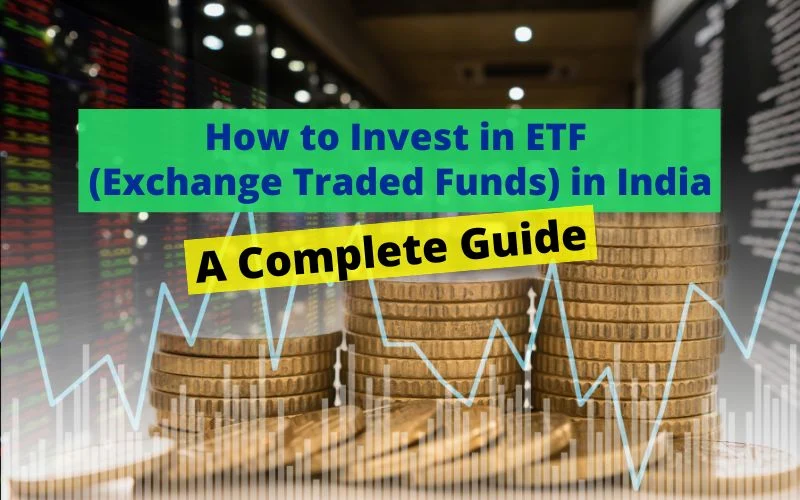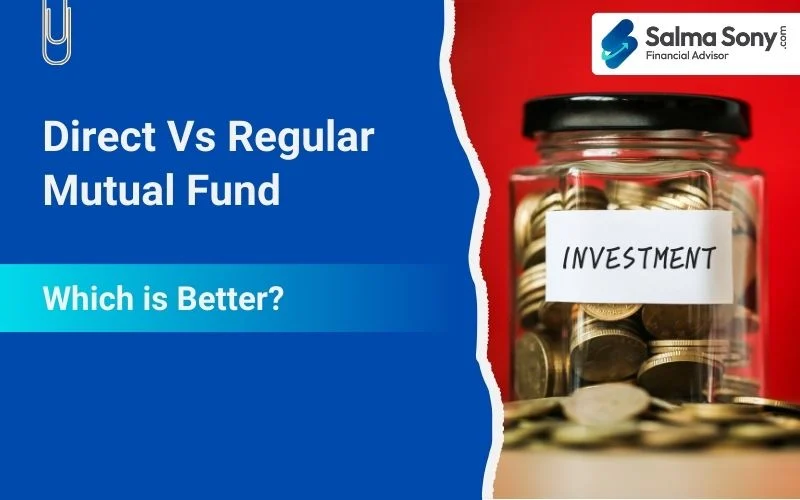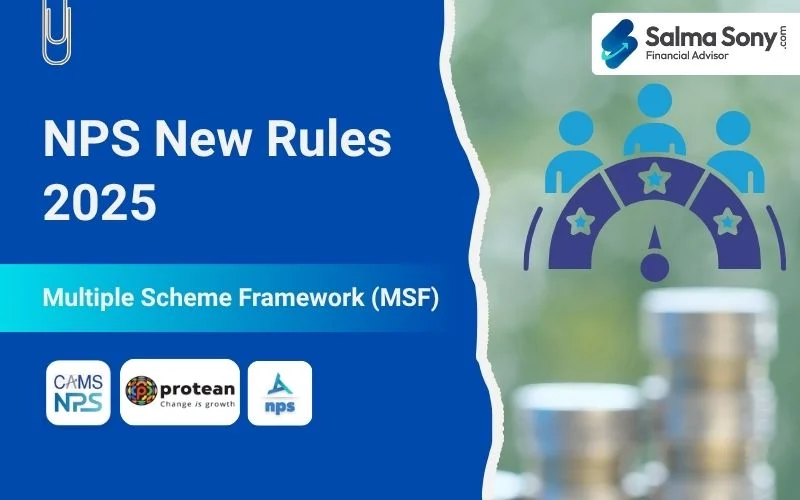Last year, I met Priyesh, a 32-year-old software engineer from Bangalore. He had been investing in mutual funds for three years and was happy about it, but he was also interested in creating a stock portfolio where he didn’t have to do analysis but could buy and sell his investments during market hours. “I want something that gives me the diversification like mutual funds but the flexibility of stocks,” he said.
That’s when I introduced him to Exchange-Traded Funds (ETFs). Within six months, he had built a well-balanced portfolio using a mix of index ETFs. Today, he’s not just happy with his ETF portfolio; he’s actually excited about investing and has peace of mind that financial planning is taking care of his goals.
If you’re wondering how to invest in ETF options while working on your financial goals, this comprehensive guide will explain everything you need to know about ETFs in India.

What actually is an ETF?
An Exchange-Traded Fund (ETF) is an investment fund that trades like stocks on the stock exchange. Consider it a basket of stocks, gold, or other securities you can buy with a single transaction.
Unlike mutual funds, which are priced once a day after markets close, ETFs are also priced throughout the trading day. This means you can buy or sell ETFs anytime during market hours, just like individual stocks.
Here’s what makes ETFs unique:
- They track the performance of an underlying index, sector, or asset class
- You can buy ETFs through any DEMAT account, just like you would invest in stocks
- They offer instant diversification across multiple securities
- Most ETFs track popular indices like the Nifty 50, the Sensex, or specific sectors like gold, etc
For example, when you buy an ETF that follows the Nifty 50, you are effectively getting a diversified portfolio of 50 companies from the large-cap segments. It’s as if you own a piece of Nifty India, including the most prominent brands, but without the need to select each stock separately.
How ETFs Work ?
The mechanisms underlying ETFs are interesting and understanding them helps you to make better investment decisions.
You are buying shares of a fund that holds a variety of securities when you invest in exchange traded funds (ETFs). The fund manager typically simply replicates the contents of the underlying index instead of actively selecting stocks.
Here’s how the process works:
- Creation Process: Large institutional investors create ETF shares by delivering a basket of stocks to the fund house. ETF shares of equal value are given to them in exchange.
- Trading: You can purchase or sell these ETF shares once they are created and listed on the stock exchange, where retail investors can buy or sell them, similar to how funds can be bought and sold.
- Redemption: When there’s excess supply, the same institutional investors can return ETF shares to the fund house and get back the underlying stocks.
This mechanism ensures that the ETF’s price stays close to its Net Asset Value (NAV), preventing significant premiums or discounts.
The advantage of this system is that ETFs are exchange-traded securities, offering real-time prices and enabling you to trade on them instantly, something that you just can’t do with mutual funds.
Suggested Reads: How To Attain Financial Freedom | 11 Steps to Achieve Financial Freedom
Types of ETFs
The ETF universe in India has expanded significantly, offering options for every type of investor. Let me break down the main categories:
Index ETFs
Index ETFs are the most straightforward type. They track the performance of popular indices like:
- Nifty 50 ETF
- Sensex ETF
- Nifty Next 50 ETF
These work well for investors who want broad market exposure without the complexity of stock picking.
Sector ETFs
Sector ETFs focus on specific industries. Popular options include:
- Banking ETF
- IT ETF
- New Age Automotive ETF
- Financial Services ETF
These allow you to bet on specific sectors you believe will outperform.
Related: How to Create Multiple Streams of Income Through Smart Financial Planning in 2025
Commodity ETFs
Want exposure to commodities without physical ownership? Gold ETF is the most popular option, but you can also find:
- Silver ETF
- Crude oil ETF
International ETFs
These give you exposure to global markets:
- US market ETFs
- Emerging market ETFs
Thematic ETFs
These focus on specific themes like:
- ESG (Environmental, Social, Governance) ETFs
- Consumption ETFs
- Infrastructure ETFs
Leveraged ETFs
Leveraged ETFs are designed to multiply the daily returns of a given index, sometimes 2x, even 3x. So if the S&P 500 rises 1% in a day, a 2x leveraged ETF that tracks it aims to deliver a 2% gain. But it cuts both ways – if the index falls, the risks of ETFs are amplified as well. These ETFs use financial instruments such as borrowed money and derivatives to obtain that leverage, which also makes them considerably more volatile and riskier than normal ETFs.
💡Insightful Read: Money Management Formula: Step-by-Step Guide for Budgeting
Inverse ETFs
Inverse ETFs move opposite to their underlying index. If the Nifty falls 1%, an inverse ETF might rise 1%. These are complex instruments meant for sophisticated investors.
How to Invest in ETF ?
Investing in ETFs is simple. Here’s your step-by-step guide:
Step 1: Complete Your KYC
Ensure your KYC is complete. This is mandatory for all investment activities in India. Without KYC, you cannot proceed to step 2.
Step 2: Open a Demat Account
Just like buying stocks, you need a brokerage/DEMAT account to invest in ETFs. Choose a broker that offers:
- Low brokerage fees
- Good research tools
- Easy-to-use platform
- Reliable customer service
Step 3: Research ETF Options
Not all ETFs are created equal. Here’s what to look for when selecting an ETF:
Tracking Error: This measures how closely the ETF follows its underlying index. Lower tracking error is better.
Expense Ratio: ETFs typically have lower expense ratios than actively managed mutual funds, but compare options.
Liquidity: Check the average daily trading volume. Higher volume means easier buying and selling.
Assets Under Management (AUM): Larger funds typically have better liquidity and lower costs.
Step 4: Align with Your Investment Goals
Your investment goals and risk tolerance should drive your ETF selection:
- Conservative investors: Avoid ETFs and stick to mutual funds.
- Moderate investors: Focus on large-cap index ETFs
- Aggressive investors: May consider a mix of large-cap index ETFs and commodity ETFs.
Step 5: Execute Your Trade
ETF trading works exactly like stock trading:
- Log in to your trading platform
- Search for the ETF you want
- Enter the quantity
- Choose order type (market or limit)
- Execute the trade
Step 6: Monitor and Rebalance
ETFs need monitoring just like any other investment. Review your portfolio quarterly and rebalance as needed.
When Does an ETF Make Sense (and When It Doesn’t)?
As a fee-only financial advisor, I’ve seen clients make both brilliant and terrible ETF decisions. Here’s when ETFs are good for them:
- You want low-cost diversification
- You prefer transparency
- You want flexibility
- You follow a goal-based financial plan
- You want to build a stock portfolio (apart from a goal-based portfolio) but don’t have time for research and portfolio management
Here’s when you should avoid ETF:
- You’re making small and irregular investments
- You want professional stock picking
- You don’t understand the underlying asset
What You Should Know About ETFs
Why do many investors ignore ETFs
Despite their benefits, ETFs remain underutilized in India. Here’s why:
Lack of knowledge: A large number of investors are merely ignorant of ETFs and their operation, or how they differ from ETF mutual fund options.
No distributor push: ETFs aren’t actively marketed because they usually don’t pay distribution commissions.
Perceived complexity: Investors may believe that exchange-traded funds (ETFs) are more complicated than they actually are.
Why AMCs don’t market them as heavily
Asset Management Companies (AMCs) make less money from ETFs than actively managed mutual funds. They naturally concentrate their marketing efforts on higher-margin products because lower expense ratios translate into lower profits.
What to watch out for in ETFs
Low liquidity in niche ETFs: The trading volumes of certain sector or theme ETFs are low, making it difficult to buy or sell at fair prices.
Tracking error: For a variety of reasons, even index exchange-traded funds (ETFs) may diverge from their underlying index.
Currency risk: Investing in international exchange-traded funds exposes you to currency fluctuations.
Complexity risk: Because of their daily compounding effects, leveraged and inverse ETFs are not appropriate for long-term holding.
Premium/Discount to NAV
ETFs can occasionally trade above or below their net asset value. Even though arbitrage mechanisms keep this to a minimum, it’s worth keeping an eye on.
This reinforces credibility and transparency.
ETFs and Tax Harvesting Strategy (Bonus Insight)
Most blogs skip this. You can explain how ETFs allow:
Real-time selling to harvest losses
ETFs allow for immediate loss harvesting during market hours, unlike mutual funds.
No exit load or long wait like mutual funds
Because ETFs have no exit loads, tax harvesting is more effective.
Checklist: Before You Invest in Any ETF
Liquidity Check
- Does the ETF have adequate daily trading volume?
- Is the bid-ask spread reasonable?
- Can you easily buy or sell during market hours?
Fund House Evaluation
- Is the fund manager reputable?
- What’s the track record of the AMC?
- How long has this ETF been operating?
Cost Analysis
- What’s the total expense ratio?
- Are there any hidden costs?
- How does it compare to similar ETFs?
Performance Metrics
- What’s the tracking error?
- How has the ETF performed relative to its benchmark?
- Are you comfortable with the volatility?
Strategic Fit
- Does this ETF align with your investment goals?
- How does it fit into your overall portfolio?
- Are you investing for the right reasons?
Risk Assessment
- Do you understand the underlying assets?
- Are you comfortable with the sector or asset class exposure?
- Have you considered concentration risk?
Suggested Reads: How Do You Become Wealthy? Ways To Become A Millionaire / Get Rich
Is an ETF better than an Index Fund?
Before diving into the ETF vs index fund debate, let’s first understand what an index fund actually is. An index fund is a type of mutual fund that seeks to replicate the performance of a specific market index, such as the Nifty 50, by holding a portfolio of stocks or bonds that closely resembles the index’s composition. With the above lessons, we also understand that ETF also replicates the index just like index funds. So, the major difference is how they are operated, and an index mutual fund works very well for goal-based investing for busy professionals.
Index funds provide investors with broad market exposure and diversification at a lower cost by passively tracking the index rather than actively choosing individual stocks.
Now, let’s understand the differences between ETFs and Index funds, which will help you choose the right investment for your needs.
| Point of Difference | ETF (Exchange-Traded Fund) | Index Fund |
|---|---|---|
| Account Requirements | Must have a DEMAT account for trading | No DEMAT account needed; can invest directly |
| Systematic Investment | SIP facility not available | SIP (Systematic Investment Plan) is available |
| Cost Structure | Lower expense ratios, more cost-effective | Higher expense ratios compared to ETFs |
| Trading Flexibility | Can be bought/sold anytime during market hours | Transactions processed only at day’s end |
| Fund Pricing | Real-time pricing throughout trading hours | Net Asset Value (NAV) is calculated once daily, post-market closure |
| Investment Approach | Suitable for active traders and market timers | Better for long-term, regular investors |
| Minimum Investment | Can start with a minimum investment of one unit | Can start with a minimum investment of Rs. 100 |
Related Reads: Index ETF Vs Index Fund: Which Is Better?
The Bottom Line
ETFs provide an efficient and cost-effective means for creating diversified portfolios. They leverage the stock trading flexibility with the diversification benefits of mutual funds. Is it a magic formula? NO. This applies to all investments.
Choosing the right ETF can work well as a replacement for direct stock portfolios.
One thing to keep in mind: Like any investment, ETFs are subject to market risks. Past performance may not be indicative of future results, and asset prices are volatile. Always select ETFs according to your specific investment goals and risk tolerance.
While markets change and new ETF products emerge, remaining aware and keeping a watchful eye on your portfolio will assist you in maximizing the value of these versatile investment tools.
Suggested Reads: How to Double Your Money?
FAQs on Exchange-Traded Fund
Q-1: Can I invest in ETFs through SIP like mutual funds?
ETFs do not support traditional SIP, but your broker can help you set up systematic purchases. ETF SIPs are now available on some platforms, but they operate differently from mutual fund SIPs.
Q-2: Are ETFs better than Index funds?
If you want higher flexibility, ETFs can be a better option, but index funds might be better for regular investments. The choice depends entirely on your investment style and preferences.
Q-3: Do ETFs pay dividends?
Yes, ETFs pass through dividends from their underlying holdings. The dividend yield depends on the securities the ETF holds.
Q-4: I want to invest in an ETF, but I do not have a demat account
In India, a Demat account is required to invest in Exchange Traded Funds (ETFs) because ETFs are listed on a stock exchange like stocks. If you don’t possess a Demat account, you may invest in index funds.
Q-5: How do I know if an ETF has good liquidity?
Check the average daily trading volume and bid-ask spreads. Higher volume and tighter spreads indicate better liquidity, making it easier to buy or sell an ETF at fair prices.
Q-6: Can I buy ETFs for my child’s education fund?
ETFs can be great for long-term objectives, such as creating wealth. However, for goal-based investing, like a child’s education, it’s better to stick with mutual funds.
Q-7: How often should I review my ETF portfolio?
Quarterly analysis is usually adequate for most ETF investment portfolios. But watch out for major market shifts and rebalance when your asset allocation has significantly strayed from your target. Keep in mind that ETFs are exposed to market risks and must be monitored regularly.





